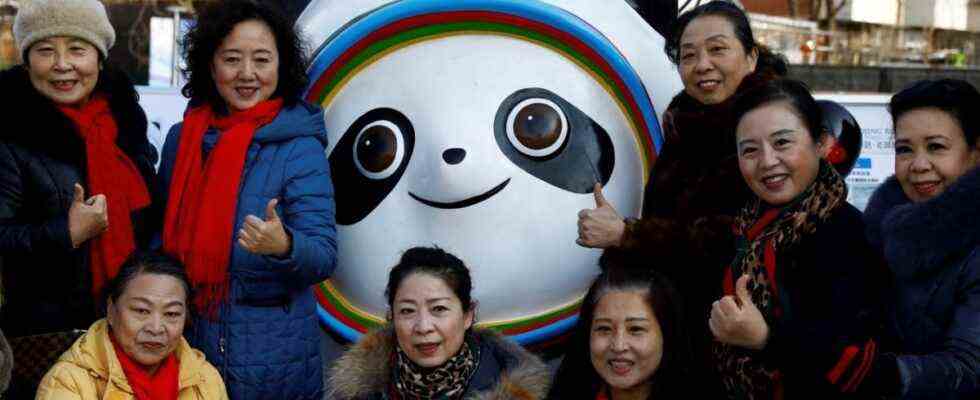The last time the mascot of the Winter Olympics was sold out early was in Turin in 2006, when “Neve and Gliz”, a snowball and an ice cube, were officiated, with the snowball being read more as a female. So: Snowballs and ice cubes were on duty in Turin, but just a few days after the opening ceremony the shelves in the shops were empty and weren’t refilled. Apparently too few mascots had been produced. Matched the games back then in northern Italy: everything was a bit carelessly past the need.
In 2006, the mascot duo was called Neve and Gliz.
(Photo: AMY SANCETTA/AP)
Things are different at Bing Dwen Dwen, the panda has certainly been produced in significant quantities, but the Chinese love for the panda overwhelms any stockpile. It has to be reproduced. What is special about Bing Dwen Dwen? The panda wears a coat of ice, which speaks for the panda – also its sympathetic overweight.
The round panda in the ice coat is also something you can keep from these games that take place behind screens and fences due to corona. The people of Beijing are not allowed in the stadiums, their participation is limited. This experience of lack stimulates the stimulus to hold onto something of the near, distant world event. And a panda on the shelf at home can be a piece of memory. Especially since you can take off the panda’s ice coat. That’s important when it gets warmer again.
Friends: The wolf Vucko, in action in Sarajevo in 1984, walking with Hidy, the mascot of the 1988 games in Calgary.
(Photo: Sven Simon/imago)
Quite apart from that: cuteness has always been a selling point, the capitalist Chinese know that, and in that respect Bing Dwen Dwen is ahead of the 2006 snowball. Also ahead of Sukki, Nokki, Lekki and Tsukki, the stylized snowy owls of Nagano 1998. Even ahead Vucko, the singing wolf of Sarajevo in 1984. At the time, Sarajevoohooo was also howled through German Olympic television, it sounded a bit scary, and that sometimes came to mind when you saw what became of Sarajevo a little later, during the war.
Vucko has a story, it grew on him later. Bing Dwen Dwen has a mission, it’s written all over his face: keep smiling. Because if the Chinese love him, then they also love the picture of these Olympic Games that is painted on state television. All right, everything went well. The panda in the ice coat is part of this picture, it doesn’t sing and it doesn’t say anything that could be irritating.
In Sochi, rabbits, polar bears and snow leopards tried to put on a good face for the games.
(Photo: imago)
Officiating in Sochi 2014, as part of a triumvirate, was the polar bear Bely Mishka, cousin of the real Mishka of Moscow 1980. Russians loved these bears and the bears loved their games, both Mishka 1980 and Bely Mishka 2014 cried a sentimental tear at the closing ceremony.
Will Bing Dwen Dwen cry too? There would be enough to mourn about after these games in Beijing. But probably not just from the mascot.

